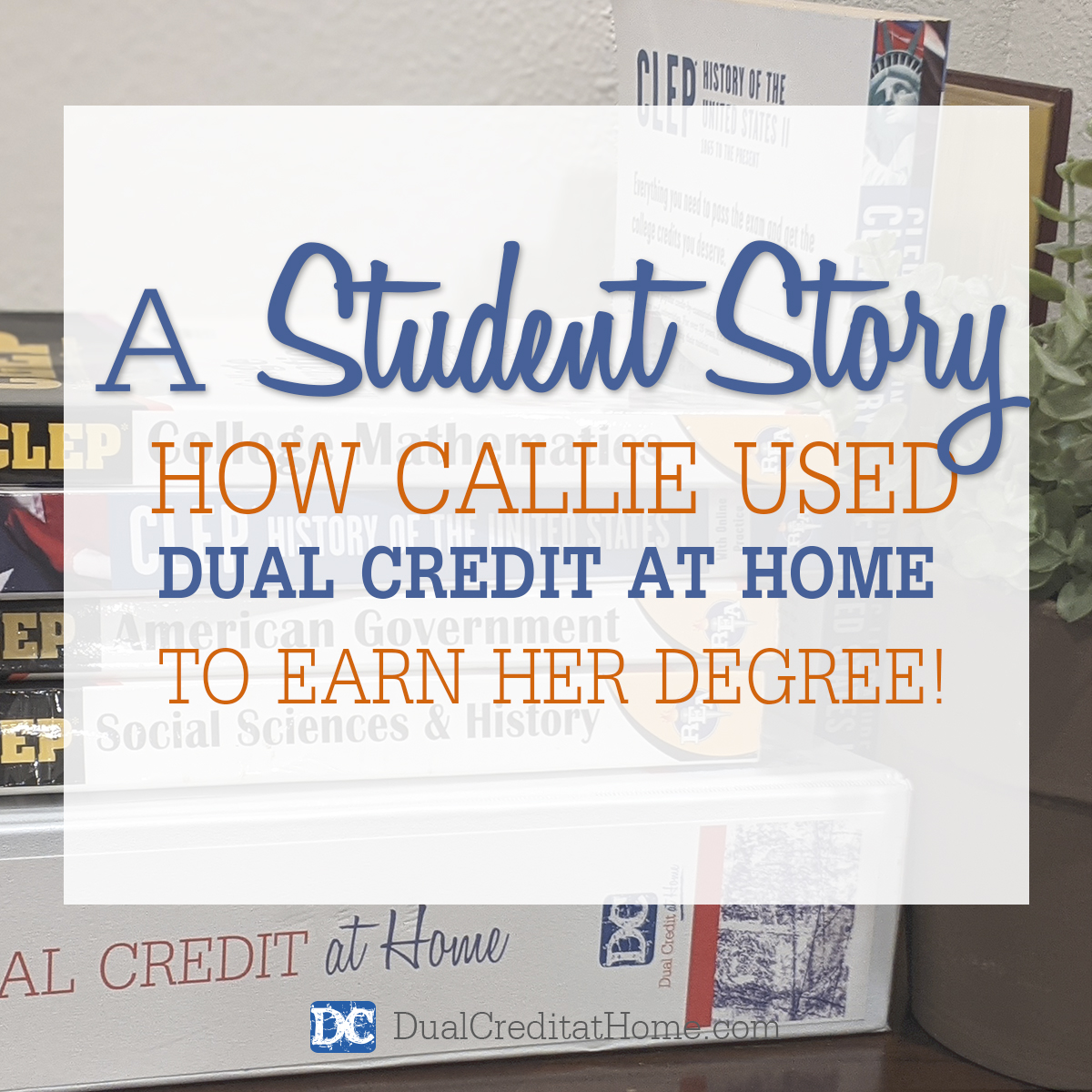It’s no secret that dual credit options are an increasingly useful solution for homeschooling and high school families, but they may not be for every family. Are you wondering why some families take advantage of dual credit options for their teens while others don’t? This post will explain some of the reasons why students and their parents feel they should or shouldn’t have their students earn college credit in high school.

Why Some Teens Earn Dual Credit
For many teens, high school is a great time to earn college credits. Here are some of the reasons students and their parents pursue this option:
– They want to earn as many credits as they can before they begin their freshman year of college, which will save them from having to repeat high school subjects as freshmen.
– They want to save money – whether students pay their own way through college, or their parents foot the bill, dual credit options are often much less expensive than attending a college class on campus. For these students, it makes sense to earn as many college credits as possible before they enter college.
– They want to stand out from the crowd – a high school transcript that includes dual credits demonstrates to college admissions officers that the student is capable of college level work and has the initiative to pursue higher education. Students with prior learning assessment credits, including CLEP and DSST credits, have higher graduation rates and tend to graduate sooner.
– By taking college level exams, like the CLEP or DSST, homeschool students can earn college credits while validating what they have learned at home. This is a useful tool for parents who are creating high school transcripts or reporting to state homeschool agencies.
– Many parents want to be sure that their teens are prepared for college-level studies and to help them lay the groundwork for success.
– Many students are choosing to earn their degrees using primarily credit-by-exam, so they replace the four years of high school with four years of college
– Taking college-level classes in high school allows students to earn college credits for work that they are already doing. It’s like a two-for-the-price-of-one deal.
Reasons Why Some Teens Don’t Earn Dual Credit
Dual credit isn’t for every family. Here are some reasons why teens or their parents might not be pursuing dual credit options:
– Many parents are unaware of the dual credit options available to them, including credit-by exam.
– Parents don’t always plan ahead for their student’s lives after high school. Sometimes teens graduate from high school before they’ve even considered the possibility of dual credit.
– Some parents and students simply default to the old way of thinking — that “college takes at least four years, costs thousands of dollars, and is something you do after high school”
– Parents who have homeschooled their other high school students may not adjust their high school methods to allow for new options and simply home school high school the way they’ve always done it.
– Some teens have chosen a college that charges annual tuition — so even though they have some credits earned in advance they’re still charged the same tuition, which discourages them from putting forth the effort. These cases are rare though, as most colleges do adjust tuition based on how many credits a student transfers.
– Some teens aren’t ready to challenge themselves or be challenged, and parents worry that a bad grade would reflect negatively on the student’s GPA. CLEP exams are scored as a pass/fail and do not affect a student’s GPA.
– Students who haven’t chosen a college are unsure if their dual credits will transfer. Many colleges and universities accept DSST and CLEP credits toward their degree programs, but not all of them do. Some students may not want to pursue dual credit options unless they have already chosen a college to attend after high school.
I completely understand the hesitations parents have regarding dual credit when they are only considering on-campus options. It’s wise to give pause to dropping your 15 year old off at the curb of a junior college campus. There are times when that might be a great option — perhaps they’ll be attending with an older sibling or a parent who has returned to school. When that’s not the case, community and junior colleges might seem like they’ll do more harm than good.
Credit-by-exam at home is often a much more appealing alternative for everyone. Your students can be independent while still learning at home and earning college credit. Dual Credit at Home includes 49 weeks of study plans, with the potential to earn up to 51 college credits. It’s a great way for high school students to get a jump start on college.



